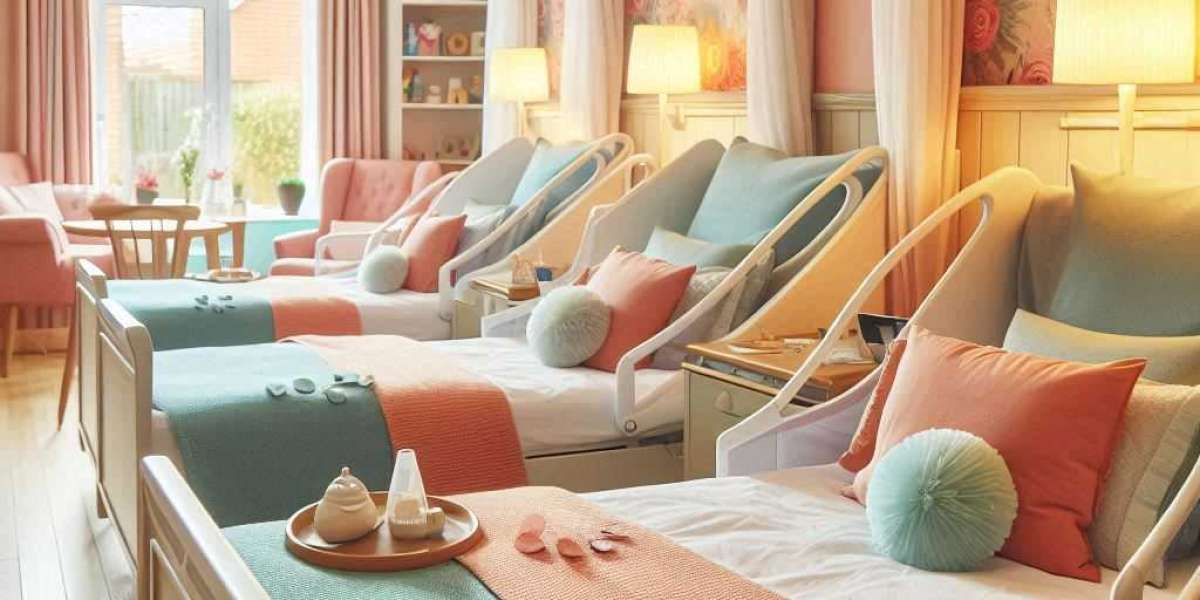In care homes, the choice of furniture, especially beds, plays a crucial role in ensuring comfort, safety, and quality of life for residents.specialist beds for care homes are designed to meet these needs by providing enhanced support, adjustability, and features that standard beds may lack. From aiding mobility to preventing injuries, these beds serve as essential components of modern care home environments. In this article, we’ll explore the importance of these beds, their features, and the options available to meet various needs in care settings.
Why Specialist Beds are Essential for Care Homes
Care home residents often require specific support and comfort, especially those dealing with mobility challenges, chronic conditions, or age-related health concerns. Specialist beds address these needs through design and functionality that prioritize user well-being.
- Enhanced Mobility and Independence
Many residents in care homes need help moving in and out of bed. Specialist beds come equipped with height-adjustable features that enable caregivers to assist residents safely. These beds can be lowered to allow residents to easily get in and out of bed, fostering a sense of independence. - Injury Prevention and Safety Features
Falls and injuries are common risks in care homes. Specialist beds include safety rails, easy-to-operate hand controls, and secure locking mechanisms to minimize these risks. Some beds have pressure-relieving mattresses and adjustable heights that can be customized to each resident’s comfort level, thereby reducing injury risks for both residents and caregivers. - Adjustability for Health and Comfort
Adjustable beds can be raised or lowered at both the head and foot, catering to various health needs, such as better circulation, respiratory issues, or chronic pain management. For example, raising the head of the bed can help residents with respiratory issues sleep more comfortably, while elevating the legs may assist those with circulation problems. - Support for Caregivers
Specialist beds are also designed with caregivers in mind. The adjustable height feature allows caregivers to assist residents at a comfortable working height, reducing the strain on their backs and helping prevent caregiver injuries. This contributes to an overall safer and more efficient care environment.
Key Features to Consider in Specialist Beds
When choosing specialist beds for care homes, it’s essential to assess various features to ensure they meet the residents' and caregivers' needs. Here are some of the critical aspects to consider:
- Height Adjustability
Most specialist beds are height-adjustable, allowing caregivers to assist residents without bending or lifting, minimizing the risk of injury. Additionally, being able to lower the bed close to the floor offers residents easier access. - Side Rails and Safety Mechanisms
For residents at risk of falling, beds with side rails and locking mechanisms are beneficial. Some beds also come with removable or adjustable side rails that can be customized for each resident’s comfort and safety needs. - Mattress Compatibility
Specialist beds are often compatible with pressure-relief mattresses, which help prevent pressure sores and provide comfort for residents who may spend prolonged periods in bed. Mattresses with adjustable firmness and specialized support further enhance the resident’s comfort and health. - Positioning Options
Many specialist beds offer multiple positioning options, such as Trendelenburg and reverse Trendelenburg positions, which can be helpful for residents with specific medical conditions. For example, Trendelenburg positioning aids in blood circulation, making it valuable for those with circulation issues or respiratory conditions. - Ease of Use and Control
Caregivers must be able to adjust the bed easily. Beds with simple, intuitive controls can make a significant difference, especially in emergencies where quick adjustments may be needed.
Types of Specialist Beds Available for Care Homes
Care homes can choose from a range of specialist beds based on the specific needs of their residents. Here are some popular types:
- Profiling Beds
Profiling beds are among the most common in care homes, offering adjustable head, foot, and height functions. They can be customized to fit various medical needs, making them suitable for residents with mobility issues, chronic pain, or other health concerns. - Low Beds
Low beds are designed to minimize the risk of injury from falls by being close to the floor. They are ideal for residents who may be prone to falling out of bed or those with limited mobility. - Bariatric Beds
Bariatric beds are wider and sturdier, catering to residents who need extra space and support. These beds offer enhanced stability, can support higher weights, and are built to provide comfort and durability. - Adjustable Air Beds
Adjustable air beds offer flexibility in firmness, allowing caregivers to modify the support level to prevent pressure ulcers and enhance the resident’s comfort. These beds are particularly beneficial for residents who spend extended periods in bed and require frequent position changes.
Selecting the Right Supplier
Finding a reliable supplier is critical when purchasing specialist beds for care homes. Look for suppliers with a strong reputation for quality, customer service, and support. Many reputable suppliers offer maintenance and repair services, ensuring that the beds remain in optimal condition.
One company worth considering is carehomefurnishings, which specializes in providing high-quality furniture and equipment for care environments. With a focus on durability, comfort, and design, carehomefurnishings offers a range of specialist beds that can be tailored to meet the unique requirements of any care home setting.
Benefits of Investing in Specialist Beds for Care Homes
Investing in specialist beds can benefit both residents and caregivers in several ways. Here’s why care homes should consider this investment:
- Enhanced Quality of Life
Specialist beds promote better sleep, reduced discomfort, and easier mobility for residents, leading to an overall improvement in quality of life. - Improved Health Outcomes
With adjustable features and pressure-relieving mattresses, these beds contribute to preventing pressure sores, enhancing blood circulation, and supporting respiratory health. - Increased Safety
Features such as side rails, lockable wheels, and easy-to-use controls provide added safety for residents and caregivers alike, reducing the likelihood of injuries. - Greater Comfort for Caregivers
Adjustable beds reduce the physical strain on caregivers, allowing them to assist residents safely and comfortably, ultimately improving job satisfaction and retention.
specialist beds for care homes are vital investments that promote safety, comfort, and quality of life for residents. By understanding the needs of residents and caregivers, care home managers can select the right bed features and types to create a safe, comfortable environment. Partnering with reputable suppliers, like carehomefurnishings, further ensures access to high-quality beds that meet the demands of a caring, supportive setting.





